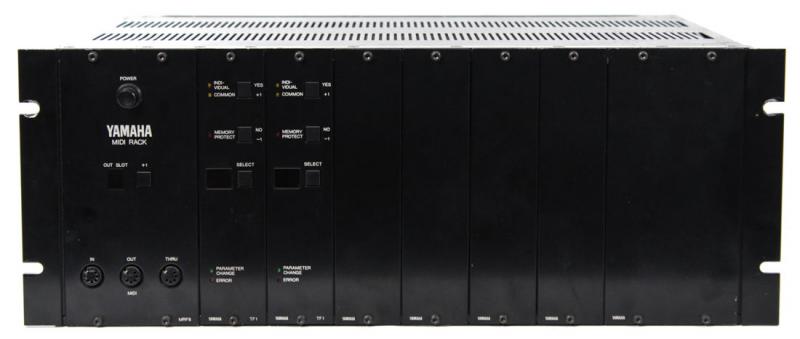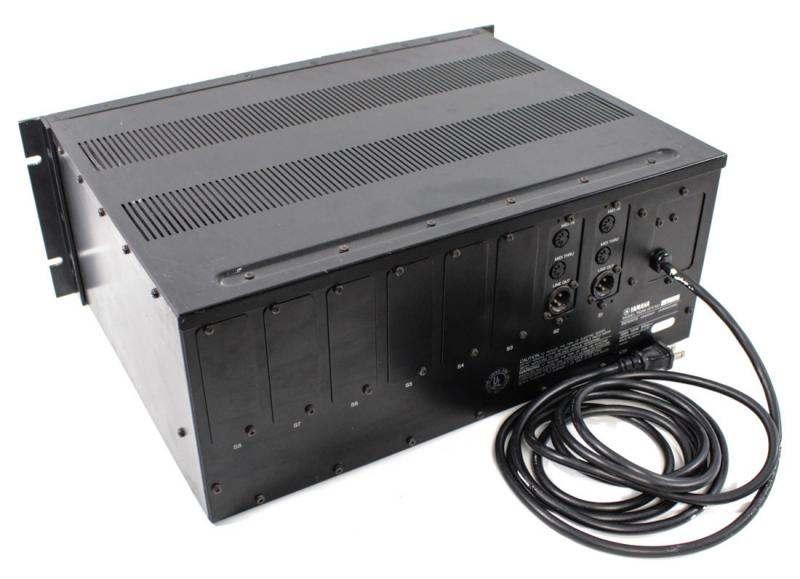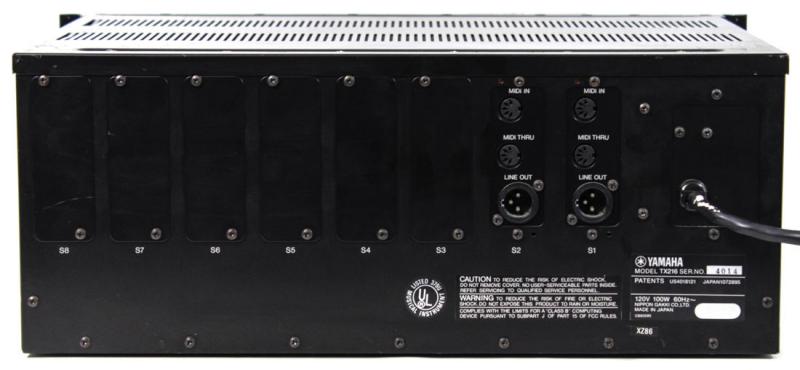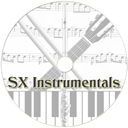Filter on ALL, SYNTH, DRUM, SAMPLER or MISC |
Total list currently 2405 items in 330 Brands |
Yamaha | TX216 |
Description | The Yamaha TX816/TX216 provides you with the means to create sounds that combine acoustic realism and warmth with total digital control. Truly the "best of both worlds". The Yamaha TX816 FM Tone Generator System basically consists of eight identical TF1 modules, mounted on a MIDI rack frame. This rack frame supplies the power to the TF1 s, and provides COMMON MIDI IN/OUT terminals so that all eight modules may be controlled by a single MIDI signal, or they may be controlled independently. The TX216 contains two TFIs, mounted in the same MIDI rack frame, and you can easily install further TF1s into the TX216 whenever you like, with the possibility of building up to exactly the same system as the TX2I6. The instructions for adding further TF1s to your TX216 are given in the section entitled ADDING A TF1 TO YOUR TX216. The tone generating unit incorporated into each TF1 module is equivalent to the one incorporated into the Yamaha DX7 Digital Programmable Algorithm Synthesizer, which has completely revolutionized the world of digital music. And, just like the DX7, each TF1 contains a memory bank which can store the data of 32 different 1 6-note polyphonic voices. However, these compact modules are actually more sophisticated than a DX7, because, as well as being able to store the 145 parameters relating to each voice, they can store 25 function parameters, for effects such as portamento, glissando, modulation wheel setting, and so on, which can be individually set for each voice. All the voices and functions are available for editing and modifying, so that on the TX816 you can have 256 different voices, which can be considered as 32 sets (or "combos") of 8 voices. This aligns particularly well with the Yamaha QX1 Digital Sequence Recorder, which can store 32 banks (or "songs") each containing eight tracks of music data. Yamaha's FM Digital Synthesis technique enables you to produce amazingly lifelike acoustic sounds, as well as the more "conventional" synthesizer tones. For the user, it requires a completely different approach to creating voices. There are no voltage controlled oscillators, amplifiers or filters (VCOs, VCAs or VCFs). An entirely unique tone generating technique is used, employing six sine-wave "operators", each with an envelope generator, that can modify each other in billions of ways to produce the complex, moving structures that are characteristic of any acoustic sound. A full description of FM Digital Synthesis is given in the DX series systhesizer owner's manuals. All the voices in the TF1 modules are controllable using MIDI signals from the DX series synthesizer, the KX series Remote Keyboard, the QX series Digital Sequence Recorder, or the Yamaha CX5M Music Computer. MIDI in- struments made by other manufacturers may also be used to control the TX816, but editing voices is only possible with the Yamaha DX7,DX5 or DX1 synthesizers. Through the use of state-of-the-art microcomputer circuitry, the wide range of functions can be controlled by just three buttons mounted onl the front panel of each module. Each of these buttons fulfills a variety of functions, and together they control all the sophisticated circuitry incorporated into the TX816 and TX216, with ease and efficiency. A superb example of Yamaha's aim to make state-of-the-art digital music technology available to all. |
| Brand | Yamaha |
| Model | TX216 |
| Device | Synth |
| Type | Rack |
| Engine Type | Digital |
| Engine | FM |
| Voices (max) | 32(16x2) |
| Multitimbral | 2 |
| Oscillators | 6(x2) |
| Engine Detailed | Digital FM synthesizer with 6 Operators and 32 algorithms per TF1 module. 128-voices via two 16-voice TF1 module cards |
| Memory | 64 patches (32 x 2) |
| Keys | 0 |
| Key type | N/A |
| Velocity | N/A |
| Aftertouch | N/A |
| Midi | I-O x3 |
| Extra info | Expandable with up to 6 TF-1 cards to make it a TX816 in the end |
| Produced: | 1984 - 1984 |
| Legend: | Obvious | Y: Yes, N: No, N/A: Not Applicable | |
| VCO | Voltage Controlled Oscillator | DCO | Digital Controlled Oscillator |
| LFO | Low Frequency Oscillator | Sub | Sub Oscillator |
| VCF | Voltage Controlled Filter | VCA | Voltage Controlled Amplifier |
| Velocity | As with a piano, the harder you hit a key, the louder the sound, unlike most organs which always produce the same loudness no matter how hard you hit a key. | Aftertouch | Pressing a key after you activated it. Channel Aftertouch, no matter which key, it will send a Channel message. Poly Aftertouch, sends the pressure per key instead of the whole channel. |
| Values for OSC, LFO, Filter, Envelope are per voice unless stated otherwise. | |||





